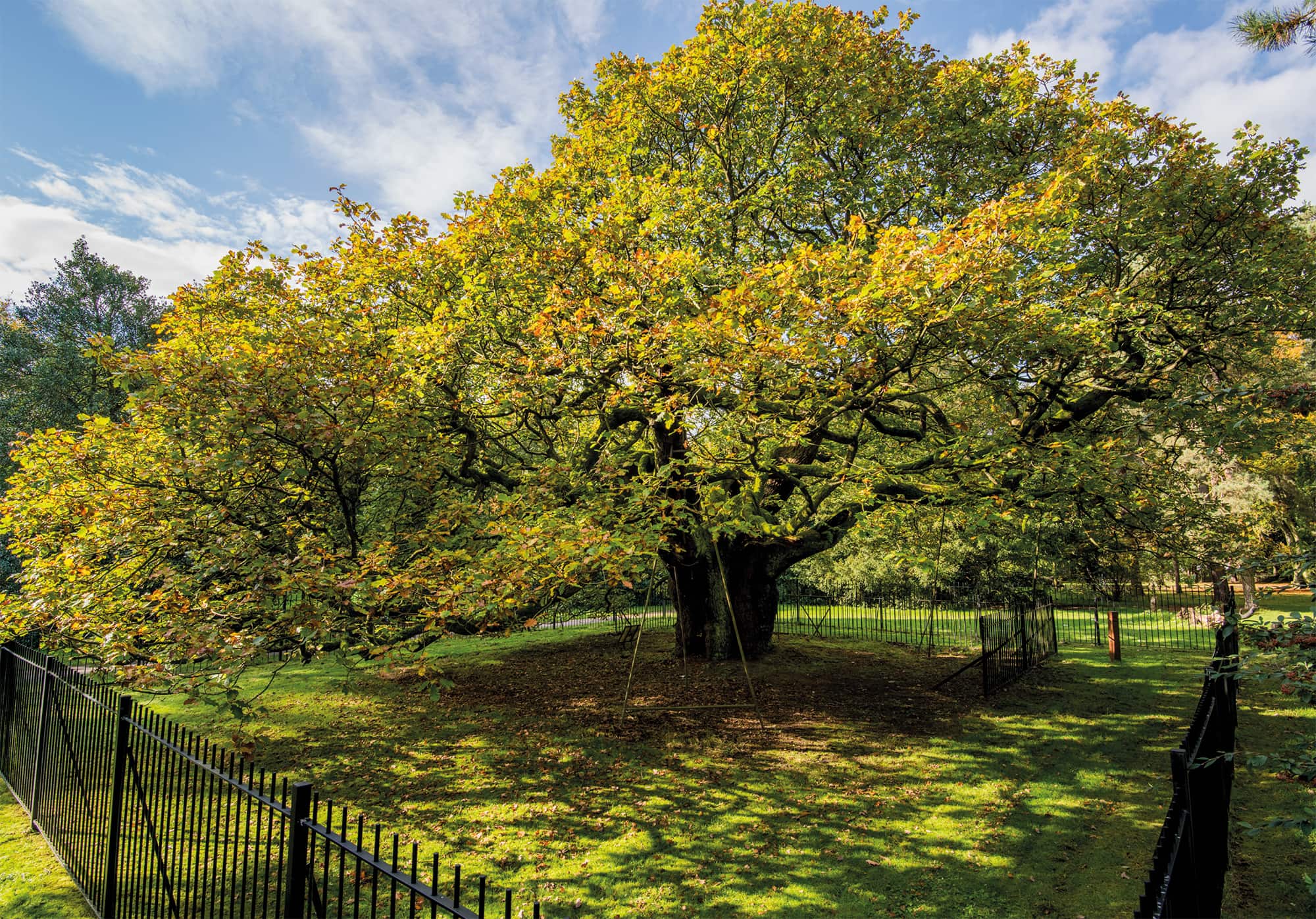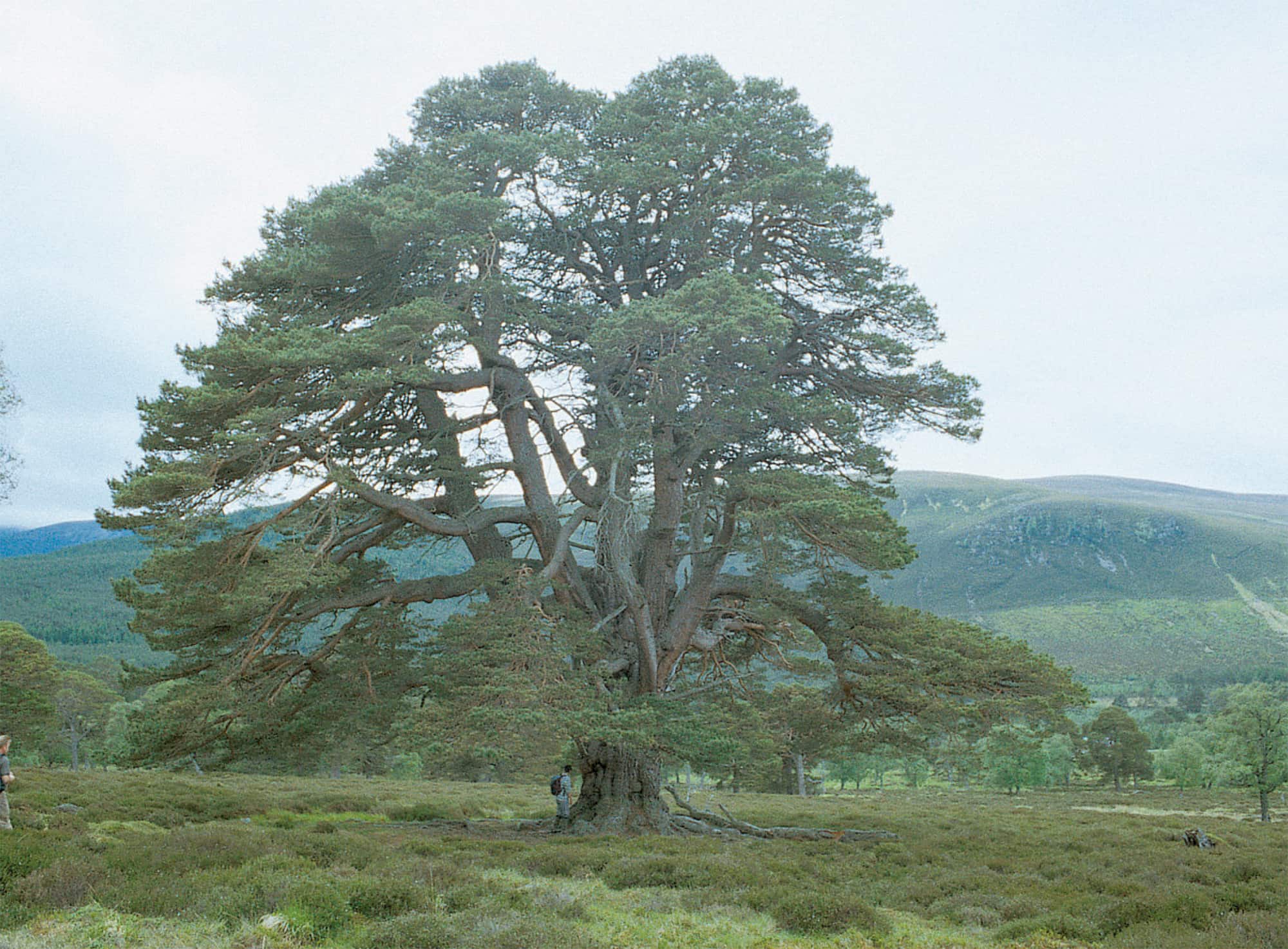To the arb profession…
Pit plant an open-grown tree that might last 400 years – at least
When deciding on the best profession to write to about the virtues of open-grown trees, it was an easy choice for Ted.

The Ancient open-grown Allerton Oak in Liverpool, voted the UK’s Tree of the Year in 2019. The last historic and cultural living monument many emigrants saw on the way to the docks to take ‘Freedom under the rule of law’ across the World (photo courtesy of Jill Jennings/Woodland Trust).
When I was deciding on the best profession to write to about the virtues of the open-grown tree, it was very easy to choose. After all, you spend most of your working lives looking at open-grown trees, some of you swinging about in them.
My concerns stem from the very positive national movement to plant trees in response to climate change. Messages of advice like ‘What tree where?’ are generally ignored because of something that could be seen as perfectly natural: the idea that the more trees you plant, the more the planet will benefit. Of course, the numbers game is not questioned, the money flows and, above criticism, those trees will capture carbon. More trees, more carbon capture.
But we need to ask questions like:
Have you thought of Quality versus Quantity?
What will our landscape look like with areas of dense, dark, lifeless two-by-two plantation woodlands?
Will many of our remaining open spaces get planted up? And what are the consequences, especially as many of these areas are already capturing carbon through well-established ground vegetation?
Unfortunately, the concept of the dense, dark, lifeless forest is well entrenched in society, with authoritative organisations like the BBC persisting even in 2020 by continually perpetuating the myth that early man arrived and cleared the dense forest to farm. But the brainwashing may have started even in our infancy with characters like Little Red Riding Hood and the Big Bad Wolf emerging from the dark forest. Yes, the dark forest – like the Sherwood of the Robin Hood stories.
But the original meaning of forest was areas for hunting, and if you hunted on horseback, you couldn’t ride amongst dense trees! Not to mention the fact that in most modern forests there is usually very little food to support grazing and browsing animals.
The best example is the so-called primeval forest of Białowieża in Poland where the bison and red deer feed in the surrounding fields and only use the forest for shelter.
Forest originally meant open areas of scattered trees and scrub, and there is a lovely centuries’ old quote where a gent said he could ride from Winchester to Windsor in the shade of open-grown oak trees. This must have meant wood pasture parkland with groves and scrub – above all, somewhere he was able to ride on horseback. This was centuries ago when perhaps The Great Park of Windsor – if you like, the Royal Hunting Forest – was said to stretch down as far as Bournemouth, west past Swindon and up to Oxford.
In 2000 Frans Vera published his work Grazing Ecology and Forest History in which he asked why young oaks do not survive in forest and came to the conclusion that oak is a very light-demanding tree. In other words, oaks evolved as open-grown trees. Oliver Rackham too decided that oak woodland in the UK was all man-made. And there is a paper on ‘The dynamic European forest’ by Frans Vera in the Journal of Arboriculture, vol. 26, 2002 issue 3! To date this is the only full article on his ground-breaking study. And in your Journal! No other environmental media outlet has ever done Frans Vera justice. Frans changed our understanding of the natural processes of our plant communities forever. His hypothesis describes a process of succession.
The Vera-esque treescape – or, if you prefer, landscape – was a moving, dynamic mosaic of open pasture, scrub, open-grown trees of all ages, wood pasture (parkland to me is tidy wood pasture) with groves of woodland of different sizes. You could use the phrase ‘man, trees and animals’ or ‘animals, trees and man’ – in fact, there are six combinations, each equally important in the development of our natural environment.

Ancient open-grown Scots pine at Mar Lodge, Perthshire. As Europe’s most light-demanding tree, here in its very natural surroundings of the Caledonian Savannah wood pasture.

Ancient open-grown elms. Once a major part of the trees that graced the British treescape. All gone.
Open-grown trees in Europe obviously figure significantly throughout the evolution of the natural world. Our ancient trees, especially our open-grown oaks and Scots pine (both top-light-demanding trees of the savannah wood pasture), are living proof, along with the vast array of organisms associated with them. They are literally oases in themselves, reservoirs of biodiversity, both above and below ground and of the soil, providing biological continuity and precious gene banks. To paraphrase Oliver Rackham, ‘A single oak that is 500 years old is a series of ecosystems in itself for which 1000 oaks of 200 years are no substitute.’ And I would add, ‘In Europe the UK’s single major obligation to the conservation of biodiversity both visible and invisible is the conservation of our ancient trees.’ Agro forestry too is now seen as logical to ‘Thinking farmers’, mimicking wood pasture – a very well-tried, sustainable system of mobile pastoral herdsman, animals and, of course open-grown, trees that pre-dates early sedentary farming.
To me it is obvious that this means you must lead: open-grown trees of all ages are your responsibility. The future is in your hands. Yet today there is a drive to cover as much ground as possible with lifeless plantations. The saying ‘cannot see the trees for the wood’ should be ‘cannot see the TREE for the wood’.
The AA’s logo is an open-grown tree. Your forefathers had exceptional vision. Never will open-grown trees or that vision be achieved in these plantation woodlands. So, if you are going to live up to your logo, our future trees need to hear your voice. No excuses.
Ted Green MBE is a founder member and the President of the Ancient Tree Forum. He was awarded the MBE in recognition of his work in conservation, particularly fungi and trees, and is a recipient the Association’s Award for Continuing Contribution to Arboriculture.
This article was taken form Issue 189 Summer 2020 of the ARB Magazine, which is available to view free to members by simply logging in to the website and viewing your profile area.